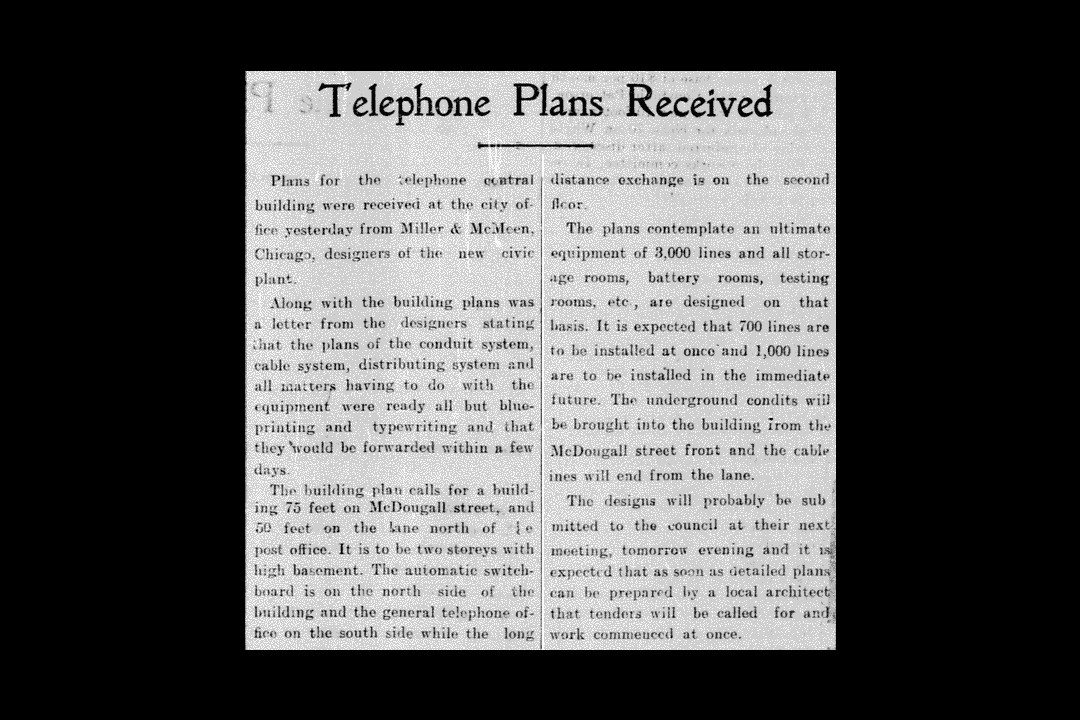On this day in 1906, plans were underway for Edmonton's first public telephone building.
Edmonton got into the telephone game early. The area's first phone line was installed in 1885 between Fort Edmonton and St. Albert by Alex Taylor (the same businessman who co-founded Edmonton's first newspaper five years prior.)
Back in a time when phones were mainly for talking into and had wires attached to them, they needed an exchange to work properly. The exchange would be where the actual connection between different lines would happen and could generally handle all the telephone subscribers for a small, specific area.
For the first couple of decades, the exchange for Taylor's tiny telephone company bounced around to different locations near downtown Edmonton. At various times, Edmonton's telephone exchange resided in a jewellery store, the post office, and other buildings. By 1904, the telephone system was straining under the weight of 500 subscribers.
Seeing the advantages that a good telephone service would have to the booming city, Edmonton purchased Taylor's business in 1905. It was renamed the Edmonton District Telephone Company, and work started on a new, purpose-built home for the wandering exchange.
When the Municipal Telephone Building was finished in 1908 on 100 Street and 102 Avenue, it was likely the most advanced telephone exchange in the country. Edmonton decided to spring for an automated exchange, whereas most other cities in Canada would continue using manual systems for another decade or so. The new, expanded system could have somewhere around 2,000 subscribers.
That expansion would last only a few years. The city was growing — both in size and prosperity — and telephone service was a sought-after luxury. The North Edmonton Exchange and Oliver Exchange were both built in 1912 to accommodate the soaring demand.
By 1919, there was around one telephone for every five people living in Edmonton, outgrowing the original Municipal Telephone Building. The equipment was moved to a new facility next door, and the original building became Labor Hall, the headquarters for the city's trade union council. In 1945, both Labor Hall and the newer telephone building were demolished to make room for the new, expanded Churchill Exchange on the corner of 100 Street and 102 Avenue.
Phones have only become more a part of people's lives in 2023, although there isn't the same need for huge buildings to house bulky, heavy exchange systems. Still, many of Edmonton's old exchange buildings survive — Churchill Exchange now houses a bank, the Oliver Exchange is a community-commercial space, and the Northern Edmonton Exchange was converted into a research lab by the Glenrose Rehabilitation Hospital. And as it was back in 1908, Edmonton remains a place for innovations in communications, such as a NAIT project that is looking to address connectivity gaps in rural prairie communities.
This is based on a clipping found on Vintage Edmonton, a daily look at Edmonton's history from armchair archivist @revRecluse — follow @VintageEdmonton for daily ephemera.

